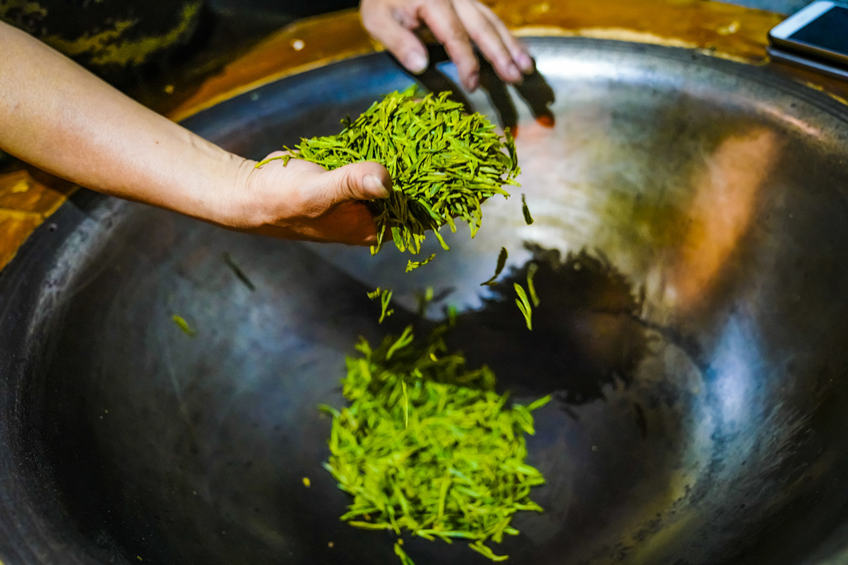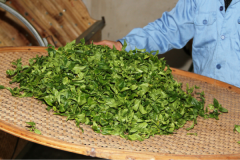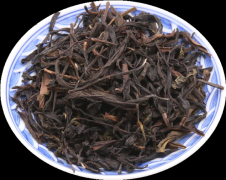What is the difference between the production technology and grade classification of Phoenix single fir cabbage daffodils?
How to make Fenghuang Dancong Tea
After harvest, there are six processes: sun drying, air drying, room temperature oxidation, high temperature oxidation stabilization, rolling and mechanical drying. The most important thing is manual oxidation, which involves repeatedly stirring tea in a bamboo leaf sieve, a process known as shaking green. Any negligent or inexperienced staff is likely to demote tea to Narcissus or daffodils.
Pick tea: choose the second to fifth pieces of tea. The first leaf has too much astringency, and the sixth or seventh leaf has too much fiber and no taste. The picking time in sunny days is 1300-1600; leaves of different colors, thicknesses and sizes should be screened for the next step.
Sun-drying: pick immediately and dry within the next 1-2 hours. Tea is evenly distributed in the sieve (cannot be covered) and is directly exposed to sunlight between 1600 and 1800. At 25 ℃, the drying time is 15-25min.

Ventilation: this is done indoors. The tea is stacked in a sieve, no more than 3 centimeters, on the drying rack. The higher the pile, the higher the temperature, the earlier the flavor release, which is not conducive to the quality.
Room temperature oxidation (Zuoqing): this is the most complex process and requires professional knowledge. Various vibrating movements of the sieve lead to further oxidation. Between each shake of the tea, a specific time should be set aside to allow the taste of the tea to form. Most of them are at night.
High temperature oxidation stabilization (killing): at a temperature of 200 degrees Celsius, throw the tea into the pot (as some machines do) and keep stirring to heat the tea evenly. This process helps to determine the color, smell and taste.
Knead and twist: sometimes rolling with a machine can help the tea to form the final shape. The tea extract seeps to the surface, creating a luster and helping to prolong the brewing time.
Drying: at present, it is mainly completed by machines, and with the decrease of temperature and the difference of drying time, it is further divided into 3 times of drying. This is another important step.
Preservation method: please store it in a dry place. It's best to put it in a sealed jar. If the humidity in the storage area is high, it is best to take the tea to the dryer for a short time for dehydration every other year.
Important Notice :
前街咖啡 FrontStreet Coffee has moved to new addredd:
FrontStreet Coffee Address: 315,Donghua East Road,GuangZhou
Tel:020 38364473
- Prev

Which is more advanced among Phoenix single fir, Chinese cabbage or narcissus? Which tastes better?
Single fir tea tree is a biological term. Single means single, and fir means tree or shrub. According to Wikipedia, single fir refers to the form of tea trees. Most tea trees emerge from the ground to form a cluster of branches; however, a rare Dan clump variety appears as a single trunk with higher branches. Once a tea tree is found to have a unique flavor, it will be taken down.
- Next

What are the ten most popular flavors of Phoenix single fir? Which fragrance is the most expensive?
Fenghuang Dancong is the general term for oolong tea, a specialty of Chaozhou in China. Different types of single fir were isolated and cultured from fine individual plants of Phoenix narcissus. All kinds of single fir trees adopt the method of single fir harvesting and tea making. There are many kinds of single fir tea, each with its own characteristics. In fact, there are so many kinds of single fir tea that even local tea farmers cannot understand all of them. After several generations of tea industry development, single fir this variety has been
Related
- Beginners will see the "Coffee pull flower" guide!
- What is the difference between ice blog purified milk and ordinary milk coffee?
- Why is the Philippines the largest producer of crops in Liberia?
- For coffee extraction, should the fine powder be retained?
- How does extracted espresso fill pressed powder? How much strength does it take to press the powder?
- How to make jasmine cold extract coffee? Is the jasmine + latte good?
- Will this little toy really make the coffee taste better? How does Lily Drip affect coffee extraction?
- Will the action of slapping the filter cup also affect coffee extraction?
- What's the difference between powder-to-water ratio and powder-to-liquid ratio?
- What is the Ethiopian local species? What does it have to do with Heirloom native species?

